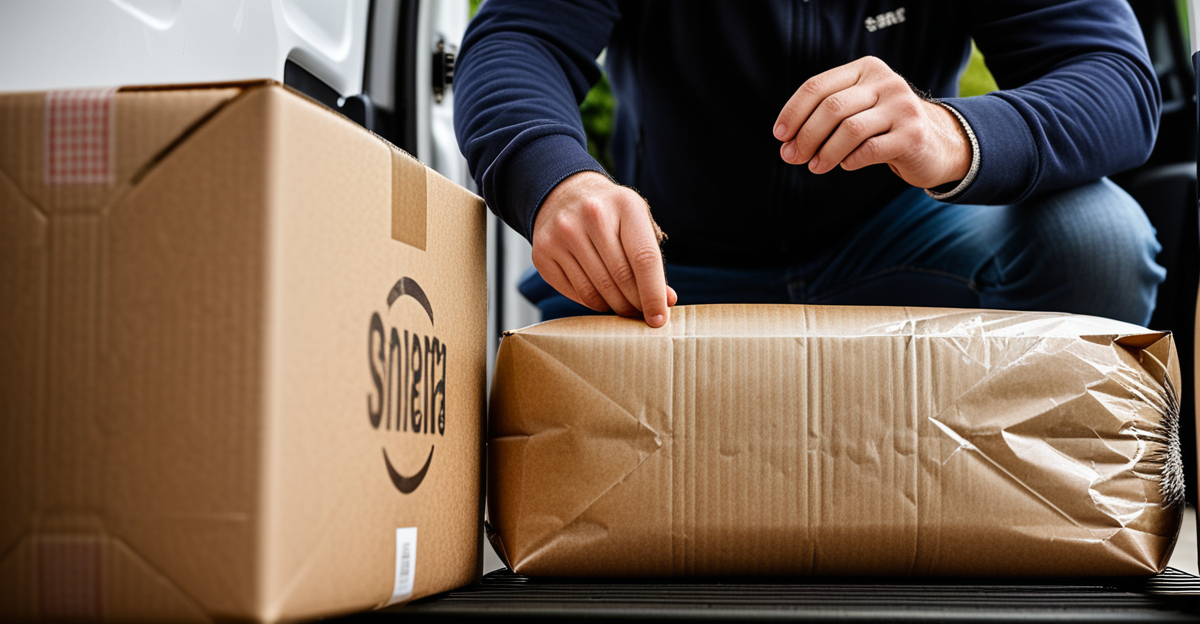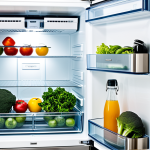Essential Preparations Before Moving Food and Perishables
Preparing to move food during a home relocation requires careful planning to ensure food safety and reduce waste. Start by assessing your current stock: decide which items to keep, donate, or dispose of. This not only lightens the load but prevents unnecessary spoilage.
Understanding UK food safety guidelines is crucial. These guidelines emphasize keeping perishables at safe temperatures and highlight strict limits on how long food can be left out of refrigeration. Incorporating these rules into your moving preparations will help avoid health risks linked to spoiled food.
This might interest you : Ultimate uk home relocation guide: effortless utility transfers for a seamless move
When planning your timeline, prioritise perishables first. Arrange your schedule to load chilled and frozen items closest to departure and plan arrival times that minimise time out of refrigeration. Creating a detailed UK moving checklist that includes specific slots for food packing and transportation times ensures nothing gets overlooked.
In sum, combining thoughtful sorting, adherence to UK standards, and strategic scheduling lays a strong foundation for moving perishables safely. Paying attention to these essentials in your home relocation tips will save both food and stress on moving day.
Have you seen this : Your essential handbook for ensuring pet happiness and comfort during a uk-wide move
Essential Preparations Before Moving Food and Perishables
Proper moving preparations are critical to maintaining food safety during your home relocation. A practical first step is carefully assessing your current food inventory. Identify what to keep, donate, or dispose of well before moving day. This reduces unnecessary items, making packing and transport easier and safer.
Understanding UK food safety guidelines is essential for a smooth transition. The Food Standards Agency (FSA) emphasizes keeping perishables out of the danger zone (between 5°C and 63°C) where bacteria multiply quickly. Planning your moving timeline with perishables as a priority helps you avoid prolonged periods without refrigeration. Aim to move chilled and frozen foods last and unpack them first upon arrival.
An efficient UK moving checklist includes allotting specific times to prepare food boxes with proper insulation and scheduling the move itself around minimizing time perishables remain unrefrigerated. This approach decreases spoilage risks and ensures compliance with local food safety recommendations, protecting you and your family from potential foodborne illnesses.
Choosing the Right Packing Materials and Containers
Selecting the best containers for moving food is key to maintaining food safety and freshness during your relocation. Different food types require specific materials for optimal protection. For chilled and frozen goods, insulated boxes combined with ice packs or gel packs provide essential temperature control. These food packing supplies keep items cold longer, preventing spoilage during transit.
Leak-proof containers are ideal for liquids and semi-solid foods, reducing the risk of spills that can contaminate other items. For pantry staples, sturdy, airtight containers or resealable bags help maintain dryness and prevent pests from accessing your food. Using cool bags for short-term transport can complement insulated boxes, especially for fresh produce or dairy.
Label each container clearly with contents and packing date. This facilitates quick and safe unpacking, reducing time food spends out of refrigeration. Organising boxes by food category also streamlines your moving preparations.
Investing in proper food packing supplies not only helps uphold UK food safety guidelines but also eases the overall moving process, ensuring your perishables remain in good condition from door to door.
Choosing the Right Packing Materials and Containers
Selecting the appropriate food packing supplies is vital for preserving food safety during a move. Different food categories require specific storage solutions. For chilled and frozen items, insulated boxes combined with ice packs or gel packs maintain necessary low temperatures. Leak-proof containers are essential for transporting liquids or items prone to spills, preventing cross-contamination.
The best containers for moving food vary: sturdy plastic or glass containers with tight-fitting lids work well for pantry staples, while rigid insulated boxes safeguard perishable goods from temperature fluctuations. Cool bags offer flexibility for short moves but should be supplemented with sufficient cooling elements.
Labelling boxes clearly is a crucial part of moving preparations. Using visible, waterproof labels specifying contents and storage instructions accelerates efficient unpacking and reduces the risk of leaving perishables unrefrigerated too long. Organising food in categories within boxes—such as frozen, chilled, and pantry—further streamlines unpacking.
Incorporating these tips into your UK moving checklist ensures your food arrives fresh and safe, making your home relocation smoother and reducing waste. Prioritising suitable food packing supplies supports overall food safety throughout the move.
Essential Preparations Before Moving Food and Perishables
Assessing your food inventory ahead of time is fundamental in your moving preparations. Decide early which items to keep, donate, or dispose of to reduce the volume of perishables needing transport. This avoids unnecessary waste and simplifies packing.
Complying with UK food safety guidelines means understanding the critical temperature ranges and timing for perishables. The Food Standards Agency advises keeping chilled foods below 5°C and frozen items well below 0°C during the move. Planning your timeline to prioritise perishables is vital: load refrigerated and frozen foods last and unload them first to maintain the cold chain.
Integrate these considerations into a detailed UK moving checklist. Include time slots for packing perishables with suitable insulation and pack only on moving day to reduce spoilage risks. Factor in travel duration and conditions, ensuring perishables spend minimal time unrefrigerated.
By combining thorough inventory assessment, adherence to food safety norms, and strategic scheduling in your home relocation tips, you significantly safeguard your perishables against contamination and spoilage during transit.
Secure Packing Methods for Perishable Items
Proper secure packing is vital when moving perishables to uphold food safety and comply with UK food handling regulations. Fresh, frozen, and refrigerated foods require distinct wrapping and sealing techniques. For fresh and refrigerated items, wrapping in airtight cling film or using vacuum-sealed bags helps retain moisture and prevent contamination. Frozen foods benefit from double sealing, ideally in leak-proof containers combined with insulated boxes.
Layering and spacing are key to maintaining airflow and preventing crushing. Avoid stacking heavy items atop delicate produce or soft cheeses to minimise damage. Use cushioning materials like bubble wrap or foam sheets between layers. This approach not only protects food integrity but also supports stable temperature management during transport.
To prevent spoilage, reduce time out of refrigeration by packing perishables last and unloading first. Keep frozen and chilled goods in insulated boxes supplemented with ice or gel packs. Consistently monitor packing timelines within your moving preparations to ensure perishables spend minimal time at unsafe temperatures.
Applying these perishables moving tips ensures compliance with UK standards while safeguarding your food. The combination of meticulous wrapping, thoughtful organising, and timing strategy is essential for a successful, safe move.
Essential Preparations Before Moving Food and Perishables
Effective moving preparations start with a thorough assessment of your food inventory. Determine what to keep, donate, or dispose of to avoid unnecessary spoilage and lighten your load. This step reduces waste and simplifies packing by focusing only on essential items.
Understanding UK food safety guidelines is vital to maintaining the cold chain during home relocations. The Food Standards Agency advises keeping chilled food below 5°C and frozen items well below 0°C. Knowing these parameters guides your packing approach and timeline.
Plan your moving schedule carefully to prioritise perishables. Load chilled and frozen foods last onto the vehicle and unload them first upon arrival to minimize time out of refrigeration. Incorporate these details into a detailed UK moving checklist, specifying when and how to pack perishables with appropriate insulation.
This focused approach in your home relocation tips protects food from contamination, reduces spoilage risks, and ensures compliance with safety regulations. Prioritising perishables when structuring your move promotes safer transit and preserves food quality throughout the relocation process.
Essential Preparations Before Moving Food and Perishables
A crucial first step in moving preparations is assessing what food items to keep, donate, or dispose of. This reduces bulk and minimises waste during transit. Focus on perishables nearing their expiry and plan accordingly.
Understanding UK food safety guidelines is essential to protect your health. The Food Standards Agency recommends keeping chilled foods below 5°C and frozen goods well below 0°C to prevent bacterial growth. These guidelines also stress limiting the time perishables spend unrefrigerated.
To follow these rules, plan your moving timeline meticulously. Prioritise perishables by scheduling them for last packing and loading, and first unpacking upon arrival. This sequencing shortens exposure to unsafe temperatures, maintaining food integrity.
Incorporate all these steps into your comprehensive UK moving checklist. Include time frames for proper packing, use of insulating materials, and travel durations that respect cold chain requirements. Such organisation strengthens your home relocation tips, making the move smoother and safer.
Adhering to these preparation principles ensures you meet UK regulations, avoid spoilage, and keep your family safe throughout the relocation process.
Essential Preparations Before Moving Food and Perishables
Thorough moving preparations start by assessing your food inventory carefully. Decide which items to keep, donate, or dispose of before moving day to minimise waste and ease packing. This early decision helps avoid transporting unnecessary perishables that might spoil.
Understanding UK food safety guidelines is crucial. The Food Standards Agency underscores keeping chilled foods below 5°C and frozen items well below 0°C to prevent bacterial growth. These temperature controls are key when planning your packing and transport, ensuring compliance and safety during the move.
Planning your moving timeline with perishables as a priority reduces spoilage risk. Load chilled and frozen foods last into the vehicle and unload them first upon arrival, maintaining the cold chain throughout. This careful scheduling should be part of your detailed UK moving checklist, which allocates specific times for packing perishables with appropriate insulation.
Incorporate these focused steps into your home relocation tips to protect your perishables from contamination and spoilage. Prioritising safety standards, timing, and inventory management delivers effective moving preparations that safeguard your food and contribute to a smoother relocation process.
Essential Preparations Before Moving Food and Perishables
A critical first step in effective moving preparations is assessing your food inventory thoroughly. Decide early what to keep, donate, or dispose of. This reduces unnecessary bulk and prevents spoiling items from complicating your move. Prioritise perishables nearing expiry to minimise waste.
Understanding UK food safety guidelines is pivotal. According to the Food Standards Agency, chilled foods must remain below 5°C, and frozen items well below 0°C throughout transit. This temperature control is essential to inhibit bacterial growth, ensuring safety and freshness.
Planning your timeline to prioritise perishables streamlines the process and sustains the cold chain. Load chilled and frozen foods last into the vehicle and unload them first at your new home. This practice minimises time out of refrigeration, reducing contamination and spoilage risks.
Your UK moving checklist should specifically include stages for packing perishables with adequate insulation, scheduling move times that limit unrefrigerated duration, and monitoring travel conditions closely. Including these steps in your home relocation tips creates a structured approach that protects your food and enhances safety throughout the move.
Essential Preparations Before Moving Food and Perishables
Assessing what to keep, donate, or dispose of before moving day is a foundational step in your moving preparations. Prioritise perishables approaching expiry dates to reduce waste and lighten your load. This decision eases packing and prevents unnecessary transport of spoiled goods.
Understanding UK food safety guidelines is crucial for maintaining freshness and avoiding health risks. The Food Standards Agency mandates chilled foods remain below 5°C and frozen items well below 0°C throughout the move. This control limits bacterial growth, safeguarding your family.
Planning your moving timeline to prioritise perishables follows directly from these guidelines. Load chilled and frozen products last onto the vehicle and unload them first at your new home to minimise time out of refrigeration. Factor this priority into a detailed UK moving checklist that allocates specific periods for packing perishables with appropriate insulation.
Incorporating these strategies into your home relocation tips ensures compliance with safety standards, reduces spoilage risk, and promotes efficient packing. By managing inventory thoughtfully, adhering to temperature controls, and scheduling wisely, you create a robust framework for safely moving your perishables.
Essential Preparations Before Moving Food and Perishables
Thoroughly assessing your food inventory is the foundation of successful moving preparations. Decide which items to keep, donate, or dispose of before moving day. This reduces the volume and prevents transporting perishables likely to spoil, saving time and money.
Understanding UK food safety guidelines is essential in home relocations. The Food Standards Agency recommends maintaining chilled foods below 5°C and frozen foods well below 0°C to prevent bacterial growth. These temperature limits guide how you plan packaging and transport, ensuring compliance and safety.
When should perishables be packed and moved to minimise risk? Packing perishables last and loading them last onto the vehicle helps keep them colder longer. Upon arrival, unpack perishables first to restore refrigeration quickly. This sequencing maintains the cold chain and reduces the chance of spoilage.
In your UK moving checklist, include specific timing for packing perishables with appropriate insulation. Consider travel duration and conditions, aiming for minimal time unrefrigerated. Integrating these steps into your home relocation tips ensures your perishables stay safe, fresh, and compliant with UK food safety standards throughout the move.











